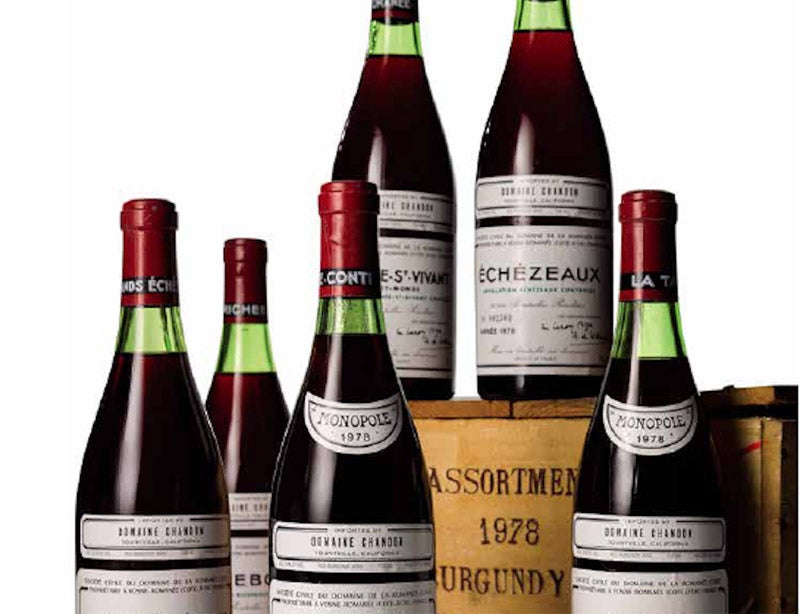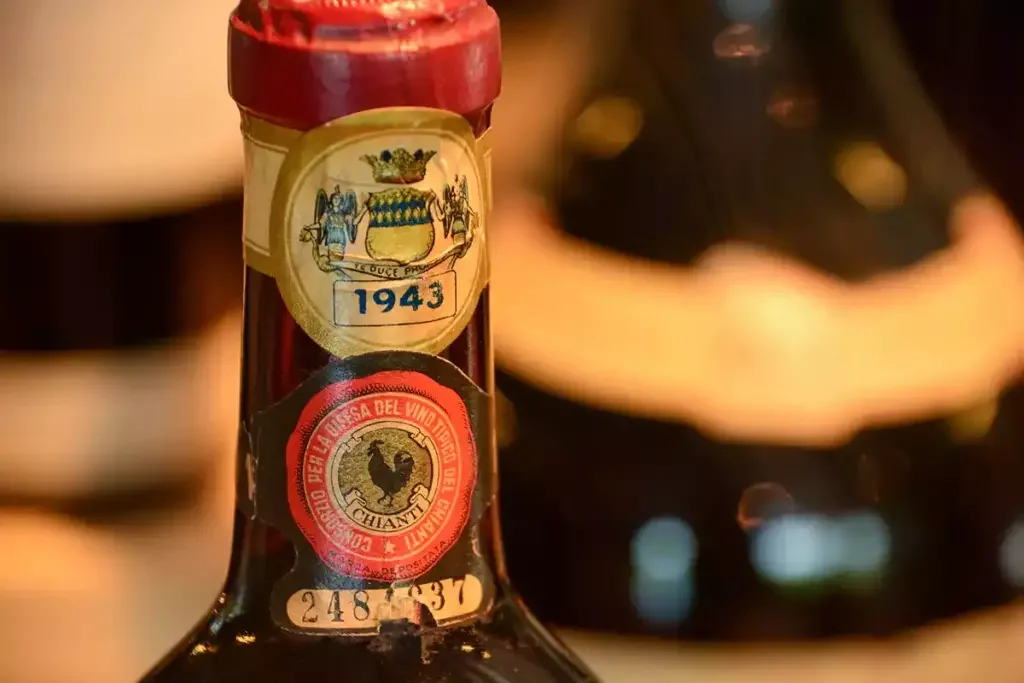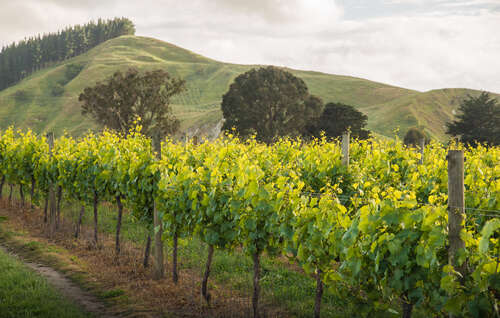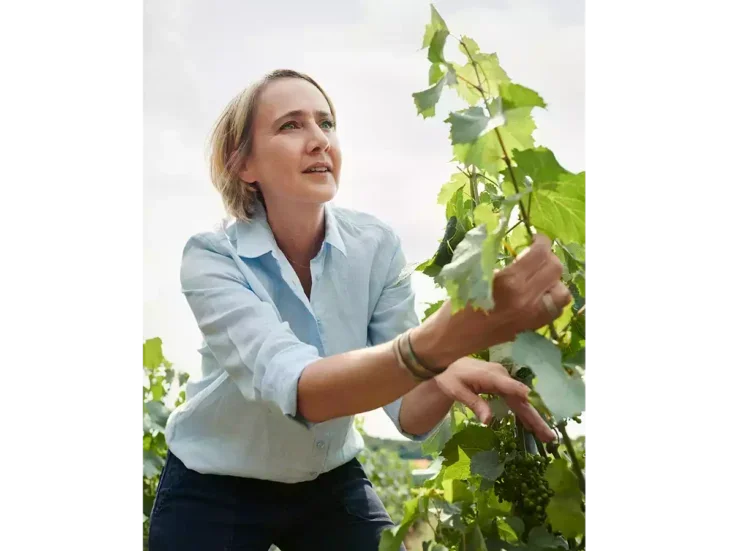
Consider two extreme systems for describing wine: One is to assume that origin is important and to assign every plot of land a position in a hierarchy. Burgundy is the paradigm, of course. An alternative is to give no description at all except for the name of the producer; in the most extreme version, even the vintage would not be stated.
Burgundy epitomizes the success of a terroir-based system, with wines from the top sites (not just Romanée-Conti) reaching stratospheric price levels. But stripped-down descriptions can also be successful; the most expensive Vin de France, which carries only the producer’s name (Liber Pater) and the vintage, lists at more than $4,000 per bottle.
The perception that a hierarchy adds value to a region has spread across France and beyond. Pouilly-Fuissé gained a lift by adding a hierarchy in the form of introducing premiers crus, and Beaujolais is trying to do the same. Previously, Muscadet tried to lift itself out of the doldrums by adding crus. The Languedoc has made attempts to put in place a partial hierarchy. In fact, there is virtually no part of France without some sort of hierarchy. Interestingly, this applies only to wine. There are AOPs for chickens and cheese, for example, but no formal hierarchy among AOPs.
Informal hierarchy
Formal hierarchies are scorned in the New World, but anywhere there has been a move toward geographical descriptions, some sort of hierarchy has formed de facto if not de jure, because some areas are recognized as superior to others. This tends to be true when smaller areas are defined within larger areas. Rutherford and Oakville would generally be considered superior to generic Napa Valley, or even to St Helena (to their north) or Coombsville (to their south). Australia was for a long time the most skeptical holdout against terroir, but the terra rossa soil of Coonawarra, even though not formally recognized, stands out at the top of an informal hierarchy.
There are certainly lessons to be learned from attempts to introduce hierarchies both historically and recently. The 1855 Classification in Bordeaux is no doubt the most famous attempt to base a hierarchy on market prices. It bears little relationship to terroir or any other objective criterion. There may be a case to be made that the first growths actually have better terroir than other châteaux, being more reliably based on deep gravel mounds, but it would be hard to substantiate any consistent difference among the rest of the hierarchy.
The survival of the 1855 Classification is often taken as a tribute to the perspicacity of its creators, but I submit that the true situation is very different. It is basically irrelevant; with the exception of the first growths, there is no relationship between price today and position in the Classification. And the dominance of the first growths may just as well be attributed to self-reinforcing marketing as to an intrinsic advantage over all other châteaux. The attempt to reproduce the system on the Right Bank by introducing a classification system subject to periodic revision has not been a notable success; if you compare the classified châteaux in St-Emilion with the unclassified châteaux in Pomerol, it would be hard to make the case that St-Emilion has benefited from the system.
Climate change makes the point that, just as the 1855 Classification was a snapshot of commercial conditions at the time, so any terroir-based system, insofar as climate is a part of terroir, is a snapshot of climatic conditions at the time. Terroir-based classifications that were created in the cooler climates of past centuries may lose their accuracy in the age of climate change. Classification based on climate (as part of terroir) lasts longer than one based purely on commerce—but the principle that it is a snapshot that will, in time, lose its relevance remains the same.
Holes in the middle
Recent attempts to introduce various classification systems in Europe have had no more than mixed success. Germany has been moving from a system based on sugar levels to a system based on terroir. The use of sugar levels to establish a hierarchy for sweet wines was always subject to the problem that sugar is not really a very good criterion for quality. It was passable in the era when the climate was cooler, so that achieving ripeness (as judged by sugar level) was at best problematic, and the level of ripeness was therefore to some extent a measure of quality. In the present era, it is more misleading than useful.
But Germany’s attempt to move to a site-based system has not really achieved a great success. Problems are partly due to errors in design of the system, partly to execution. The problem with design is the emphasis on the individual site and the lack of emphasis on the commune. Placing the name of the site prominently on the label works well enough when it is as famous as, say, Doctor, but it lacks sufficient context for lesser sites. The old system of nomenclature—using Bernkasteler Doctor to indicate that the vineyard is in Bernkastel—may have seemed cumbersome when combined with the full details of the sugar-based hierarchy but tells you where you are in the world. It is too much of a leap to go from the Mosel (as the general region), to the single vineyard. It also means that it’s difficult to build communal identity as the necessary intermediate. Couple this with the problem in execution, that there are far too many Grosse Lage for the sites really to be grands crus—in fact, the hierarchy is so top-heavy that it might well topple over—and the system begins to look insufficiently informative, if not just as confusing as its predecessor.
The same problem of the hole in the middle has been evident in Alsace, where the leap from Alsace region to grand cru, coupled with extreme variability in the quality of grands crus—the system seemed to have been a political compromise to give every village its own grand cru—has made it difficult to use the grands crus to indicate either top quality or particular character. Now Alsace is trying to introduce premiers crus, and also wines at communal level, but the difficulty in retrofitting the intermediate levels is that it lacks conviction unless some of the excessive top layer is pruned away. That surely is not going to happen.

Hierarchy in Italy
Hierarchy in Italy seems to be more a matter of reverence for aging in the bottle than assessment of any intrinsic quality. The distinction between the annata (the regular vintage release) and the riserva in Chianti Classico or Brunello di Montalcino, for example, is defined solely in terms of the period from the harvest to the sale of the bottle. A wine does not necessarily have to age longer in oak before it is bottled. In effect, the same wine could be a regular release if bottled at one time and a riserva if bottled a year later. (I am tempted to stick a label on bottles in my cellar after I have kept them for a year.) That means riserva is at best a declaration by the producer that the bottle will age longer; at worst, it is simply a marketing ploy.
It is true that, for some producers, riservas either age longer in wood before bottling or come from specific sites, but this is not mandated. The new top tier of gran selezione, introduced with the 2010 vintage, was a fluffed opportunity to make a better system. The aging requirement for gran selezione is slightly longer than for riserva (30 months versus 24 months), but in neither case is there any mandate about the use of wood or time spent on the lees. The only distinction is that from 2026 the gran selezione must be at least 90% Sangiovese and international varieties are excluded, whereas riserva retains the old limit of 80%—and it continues to admit international varieties into the blend.
When the first gran selezione cuvées were introduced, I admit I was somewhat skeptical, since virtually all were riservas that had been relabeled. Over the next few years, there was a distinct move to higher quality, with some new cuvées being introduced and even some Super-Tuscans reverting to the DOCG system. (Ironically, that trend will be reversed in 2026 for those gran seleziones that continue to include international varieties.) There was also something of a move toward a more international system, with gran seleziones tending to favor a black-fruit spectrum, compared to the sour red-cherry fruits of traditional Chianti Classico.
Although this was not to all producers’ tastes, more and more producers joined the system, and gran selezione in Chianti Classico came to represent a distinctly higher level of quality. In fact, I would be inclined to say that the jump in quality from riserva to gran selezione is more evident today than the jump from Chianti Classico to riserva. It now seems, however, that gran selezione is becoming a victim of its own success: so many producers are offering gran seleziones that the category is losing its distinction, there is rather variable quality, and it is turning into a declaration from a producer that this is their top wine. I suppose it is a hierarchy of sorts, but it’s becoming entirely relative to the quality of the individual producer.
The new use of communal names in Chianti Classico represents another missed opportunity. Granted, this is a really difficult project, because geology and microclimates do not coincide with the administrative boundaries of the communes; even so, the principle should be that the communes represent an intermediate level between the generic tier and the top tier. The point should be that if you like a wine that comes from a commune, you should be tempted to try wines specifically from that commune, either blends across the commune or individual sites within it.
Both in Chianti Classico and in Montepulciano, the decision has been made to allow defined communal names to be used, but only in restricted circumstances. In Chianti Classico, the commune can be added to the label only if the wine is gran selezione. In Montepulciano, it can be used only if the wine comes from a single vineyard. This rather undercuts the purpose of developing communal identity. What is the point of a single vineyard creating a halo around the commune if the commune name cannot be used on other labels?
Bottom-up better than top-down
Surely the way to build a hierarchy is from the base up: Start with the region, develop subregions or communes depending on the organization of vineyards, and then pick out the top sites to be a hierarchy of crus, either premier or grand or both, depending on circumstances. If you want to build the reputation of the region, there has to be a higher level than the generic, but it is necessary to realize that not everyone is a connoisseur who will be interested in (or prepared to pay for) top vineyards. The commune is not only the way to provide more versatility in the marketplace, it is also the bridge to the higher levels; not everyone starts at the top, but building a communal reputation creates a path for interested consumers to progress even higher. Going straight to the top and then trying to retrofit the communes is an odd way to proceed.
I am tempted to add that building from bottom-up organization is generally a better way to proceed than top-down imposition, and I could suggest examples from business and politics—but then I would be straying well beyond my brief to write about wine.






